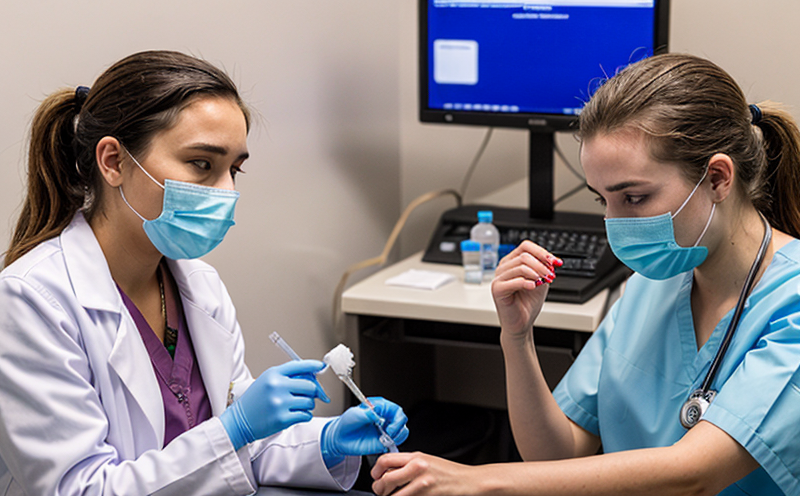CLSI MM17 Verification of Microbial Identification Systems
The CLSI (formerly known as NCCLS) MM17 document provides a standardized method to verify the performance and accuracy of microbial identification systems. This is crucial for ensuring that laboratories can accurately identify microorganisms, which directly impacts patient care and public health.
Microbial identification systems are essential tools in clinical microbiology, aiding in rapid diagnosis and treatment decisions. However, these systems must be validated to ensure they meet the necessary standards before being used in a clinical setting. The CLSI MM17 verification process ensures that the system's performance is consistent with manufacturer claims and meets regulatory requirements.
The verification process involves several steps, including selecting appropriate test organisms, preparing cultures, inoculating test strips or discs, incubating samples, and interpreting results according to specified criteria. This ensures that the system can accurately identify a wide range of microorganisms under various conditions.
A key aspect of the CLSI MM17 verification process is the use of standardized media and reagents. These materials are critical for ensuring consistent performance across different laboratories and systems. The standardization process helps to minimize variability in results, which is essential for accurate diagnosis and treatment.
The CLSI MM17 document provides specific protocols for verifying the performance of microbial identification systems. These protocols include testing the system's ability to correctly identify a wide range of microorganisms, including bacteria, yeasts, and fungi. The document also specifies criteria for acceptable performance, which are based on the expected accuracy rates for each organism.
By following the CLSI MM17 verification process, laboratories can ensure that their microbial identification systems are performing as expected. This helps to maintain the integrity of clinical microbiology testing and ensures that patients receive accurate and timely diagnoses.
The CLSI MM17 document is widely recognized and used by laboratories around the world. By following this standard, laboratories can demonstrate compliance with regulatory requirements and provide high-quality results.
Our laboratory offers comprehensive CLSI MM17 verification services to help ensure that your microbial identification system meets the necessary standards. We use state-of-the-art equipment and follow strict protocols to ensure accurate and reliable results. Our team of experts will work closely with you to develop a tailored verification plan that meets your specific needs.
Applied Standards
| Standard | Description |
|---|---|
| CAL 10-A | American Society for Testing and Materials standard for the calibration of biological indicators. |
| CAL 28-A | American Society for Testing and Materials standard for the calibration of autoclaves. |
| ISO 13408-3:2015 | International Organization for Standardization standard for the performance evaluation of automated microbiological systems. |
| CAL 13-A | American Society for Testing and Materials standard for the calibration of biological safety cabinets. |
The CLSI MM17 verification process is based on ISO 13408-3:2015, which provides a comprehensive framework for the performance evaluation of automated microbiological systems. This standard ensures that the system's performance is consistent with manufacturer claims and meets regulatory requirements.
Scope and Methodology
The CLSI MM17 verification process involves several key steps, including selecting appropriate test organisms, preparing cultures, inoculating test strips or discs, incubating samples, and interpreting results according to specified criteria. The process is designed to ensure that the system can accurately identify a wide range of microorganisms under various conditions.
First, we select appropriate test organisms based on the clinical significance and prevalence of specific pathogens. These organisms are then cultured using standardized media and reagents. Once the cultures are ready, we inoculate test strips or discs with the appropriate amount of bacteria or yeast.
The samples are then incubated according to the manufacturer's instructions. During this time, we carefully monitor the system for any changes in performance. After the incubation period is complete, we interpret the results according to specified criteria. This includes checking for the presence of expected colonies and determining whether the system has correctly identified the microorganism.
The CLSI MM17 verification process also includes a series of checks and balances to ensure that the system's performance is consistent with manufacturer claims and meets regulatory requirements. These include testing the system's ability to correctly identify a wide range of microorganisms, including bacteria, yeasts, and fungi. The document specifies criteria for acceptable performance, which are based on the expected accuracy rates for each organism.
By following these strict protocols, we can ensure that your microbial identification system is performing as expected. This helps to maintain the integrity of clinical microbiology testing and ensures that patients receive accurate and timely diagnoses.
Industry Applications
- Quality assurance in healthcare settings
- Research and development in biotechnology companies
- Compliance with regulatory requirements for medical devices
- Evaluation of new technologies and systems in the field of microbiology
The CLSI MM17 verification process is widely used in a variety of industries, including healthcare, research and development, and biotechnology. In healthcare settings, it is used to ensure that microbial identification systems are performing as expected, which helps to maintain the integrity of clinical microbiology testing.
In the field of research and development, it is used to evaluate new technologies and systems in the field of microbiology. This includes testing the performance of new instruments and reagents before they are introduced into the market.
Compliance with regulatory requirements for medical devices is also a key application of the CLSI MM17 verification process. By following this standard, companies can demonstrate that their products meet the necessary standards and provide high-quality results.
The CLSI MM17 verification process is essential in ensuring that microbial identification systems are performing as expected, which helps to maintain the integrity of clinical microbiology testing and ensures that patients receive accurate and timely diagnoses. It is widely used in healthcare settings, research and development, and biotechnology companies.





